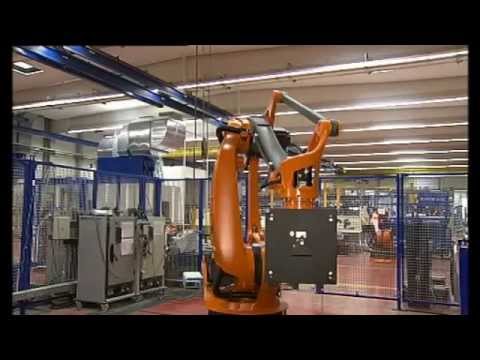**Self-Reproducing Robot: Revolutionizing Industrial Robots in Manufacturing**
Robots have long been an integral part of the manufacturing industry, streamlining processes, improving efficiency, and enhancing overall productivity. Over the years, advancements in robotics technology have pushed the boundaries of what these machines can achieve. One such breakthrough, the concept of self-reproducing robots, has recently become a reality, thanks to the innovative work carried out by KUKA robots in the field of industrial automation.
The idea of self-reproducing robots may seem straight out of a science fiction movie, but recent developments have brought it to life, albeit on a simple scale. Through the collaboration of robotics experts and engineers, KUKA robots have successfully demonstrated the creation of a robot that can build another robot, marking a significant milestone in the field of industrial robotics.
In the realm of manufacturing, the ability to produce robots autonomously holds immense potential. Imagine a world where factories can effortlessly produce robots that in turn produce more robots, leading to an exponential growth in their numbers. This possibility opens up new avenues for industrial automation, as well as potential cost savings and increased production capacities.
Industrial robots play a pivotal role in the manufacturing sector, performing repetitive tasks with precision and consistency. However, the conventional approach of manufacturing robots involves intensive labor, precise engineering, and intricate assembly processes. With the advent of self-reproducing robots, these limitations can be overcome, ushering in a new era of automated manufacturing.
The process of creating self-reproducing robots begins with the assembly of a mother robot, which serves as the starting point for the reproduction cycle. This robot possesses advanced programming and intricate algorithms that enable it to navigate and manipulate its environment. Additionally, it is equipped with the necessary tools and components to construct another robot from scratch.
The mother robot initiates the reproduction process by meticulously building each component of the offspring robot, including its frame, limbs, and control systems. It requires precise movements and spatial awareness, which the KUKA robots masterfully execute, thanks to their advanced programming and high-precision kinematics.
The ability of these robots to build their own kind has far-reaching implications in terms of scalability and adaptability. As the offspring robots are produced, they can be programmed to perform specific tasks within the manufacturing process, aiding in streamlining operations and reducing human intervention.
Moreover, the replication of robots can be carried out at a significantly faster pace compared to traditional methods of manufacturing. The self-reproducing robots work tirelessly, 24/7, resulting in increased production rates and reduced manufacturing cycle times. This rapid production cycle can have a profound impact on the overall productivity and competitiveness of manufacturing plants.
While the concept of self-reproducing robots holds great promise, it also raises questions surrounding their accountability and quality control. As these robots build each other, ensuring the accuracy and reliability of the replication process becomes crucial. Manufacturing defects or programming errors can lead to subpar robots, potentially compromising the efficiency and safety of the manufacturing process.
To address these concerns, rigorous testing, quality control measures, and constant monitoring are essential. Companies utilizing self-reproducing robots must prioritize comprehensive inspections, stringent programming protocols, and ongoing maintenance to ensure the highest standards are upheld throughout the production cycle.
In conclusion, the realization of self-reproducing robots represents a significant advancement in the realm of industrial robots in manufacturing. The ability of these machines to autonomously build their own kind opens up new frontiers in the field of automation, scalability, and productivity. As KUKA robots pave the way for self-replication, it is essential for companies to strike a balance between harnessing the potential of this groundbreaking technology and maintaining strict quality control measures to ensure optimal performance and safety in the manufacturing sector. With further advancements and innovations, self-reproducing robots may truly revolutionize the way we perceive and utilize industrial robots in manufacturing.
Industrial Robot
"Unveiling the Fascinating Process of Crafting Industrial Robots for Manufacturing Success"


